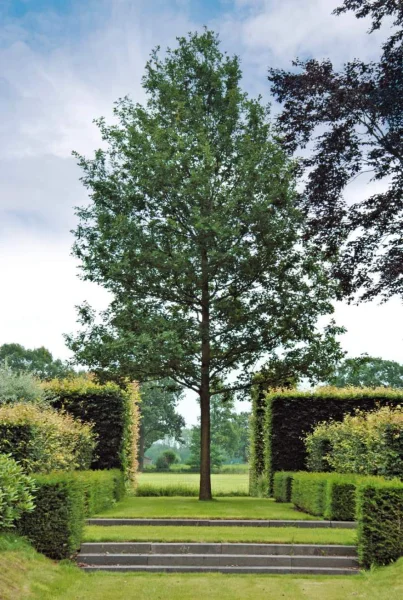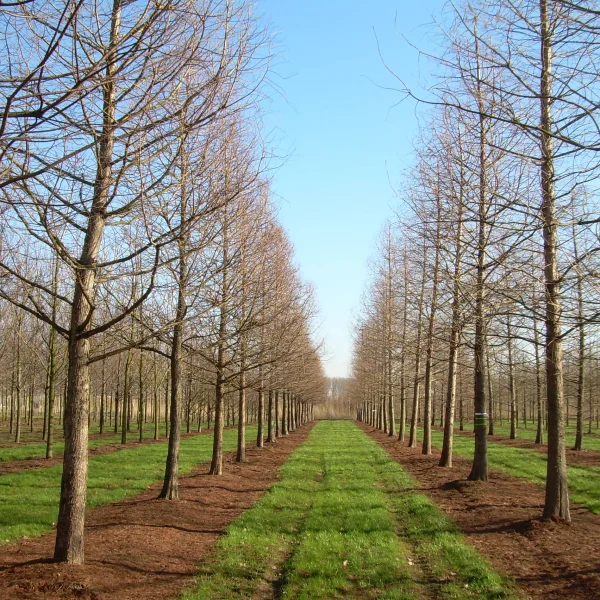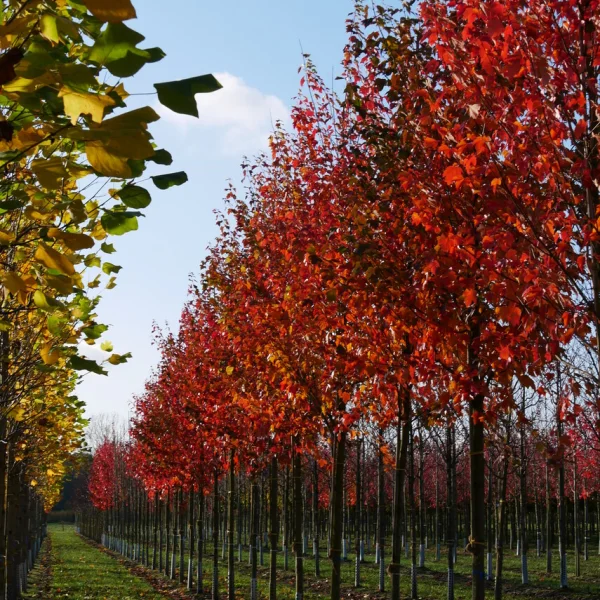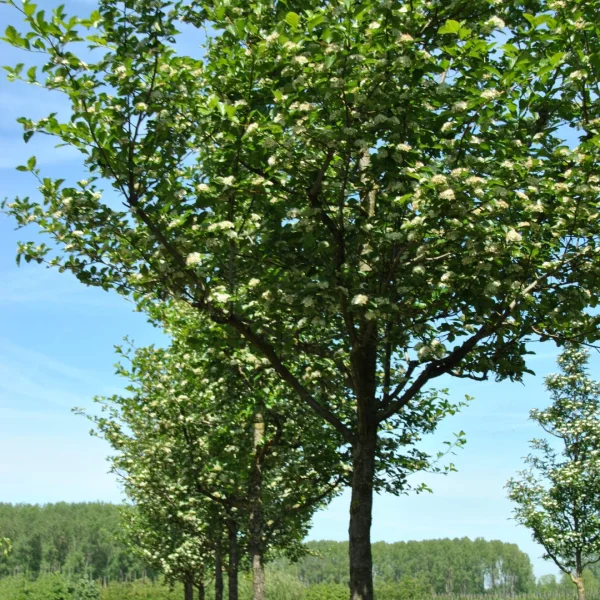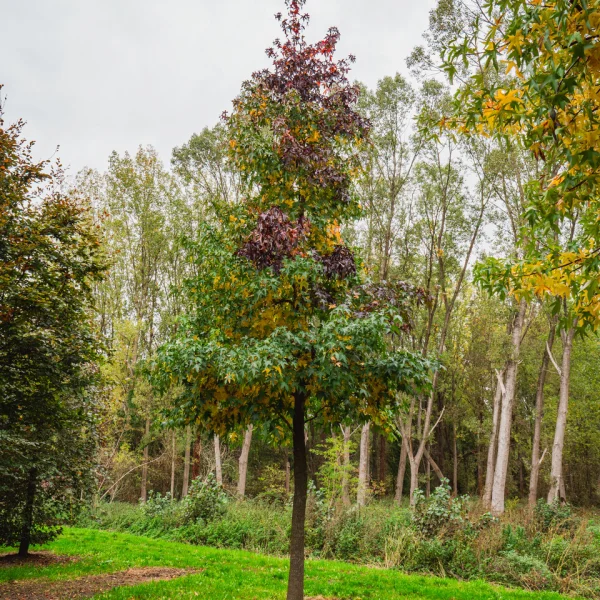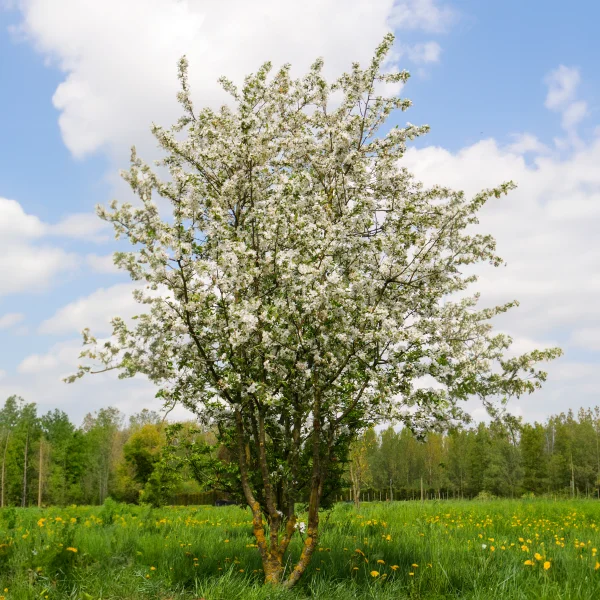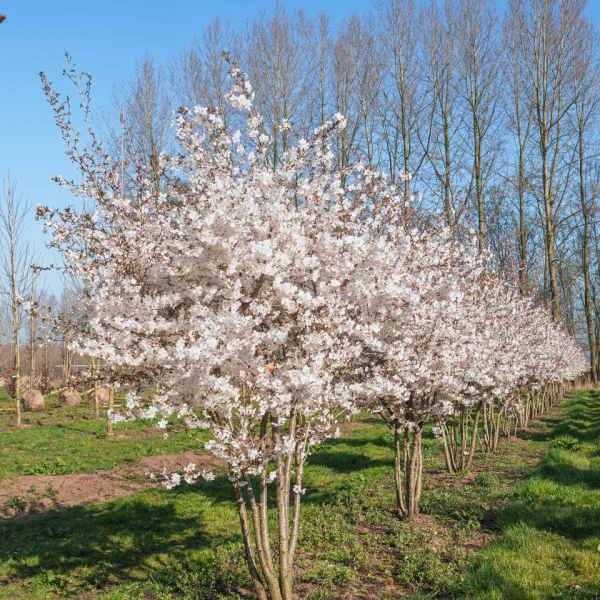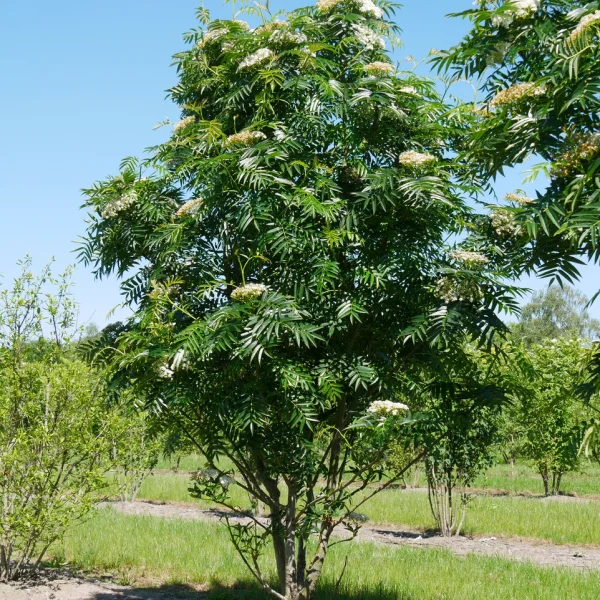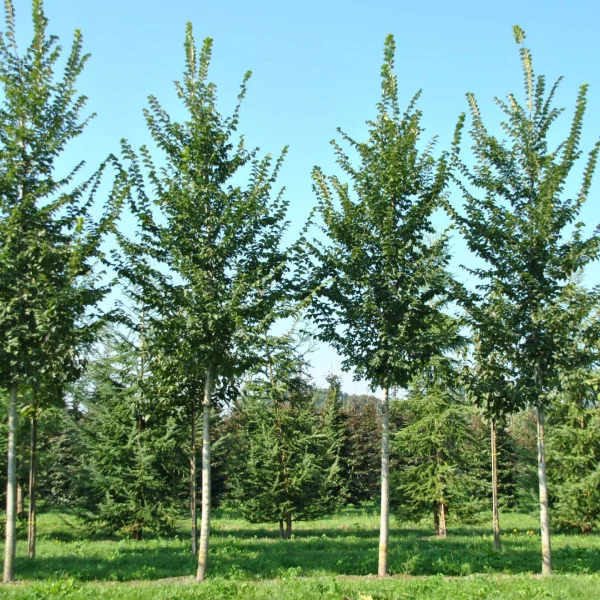Design Elements
Besides creating life, trees on a cemetery also provide structure and depth. A well-placed tree can have a tremendous effect. Multiple trees in a row can guide the way, draw attention to a particular area, or lead the eye elsewhere. Each tree species has its own unique character, and for every green desire, there is a suitable tree. There are solitary trees, such as the well-known red (weeping) beech, a maidenhair tree (Ginkgo biloba) with its bright yellow autumn leaves, or the evergreen giant sequoia (Sequoiadendron giganteum). For light color accents, there are species with yellow-green leaves, such as Catalpa bignonioides 'Aurea,' the yellow trumpet tree with fragrant flowers, or with variegated leaves, such as Cornus controversa 'Variegata,' a shrub-like grower. For planting avenues, almost all high-stemmed trees are suitable, and you could consider species with beautiful autumn colors such as Liquidamber styraciflua (sweetgum) or Acer rubrum (red maple) in various cultivars. To ensure a uniform autumn color, it is recommended to choose a cultivar. Well-placed Japanese cherry trees, such as Prunus yedoensis, produce a cloud of flowers in the spring, and many species also exist in shrub forms. For water features, there are trees that can stand with their roots in the water, such as Taxodium distichum (bald cypress).
The possibilities are endless; with trees, many different atmospheres, spaces, and sightlines can be created. However, careful consideration should be given to the tree's requirements. A tree will only develop well if the location meets its basic needs. On a cemetery, trees often live to be very old, so choosing the right tree in the right place is particularly important.
Cemeteries and Biodiversity
Natural burials are becoming increasingly popular. This can take place on special burial grounds in nature reserves, where the grave is left to nature, and no stones or other extensive markings are placed above ground. Protection, conservation, and management of nature play a central role in a natural burial ground. Different trees are planted to create a varied forest, and careful mowing management allows heathland and flowers to grow on the grassy areas. This provides the natural world with plenty of space to develop, making a significant contribution to biodiversity.
Linden trees, oaks, willows, and elms are good tree species for this purpose as they are full of living organisms. A beautiful and robust lime tree is Tilia cordata, the small-leaved lime. The range of elms now includes species that have been tested for resistance to Dutch elm disease. Good species include Ulmus 'Lutece' and Ulmus laevis. Acer campestre is the champion of the maples when it comes to biodiversity value. Additionally, all fruit trees attract bees and other pollinators. This also applies to ornamental apples and cherries, as long as they are single-flowered, such as Malus 'Red Sentinel,' Malus 'White Angel,' and Prunus 'The Bride.' Rowan trees, such as 'Sorbus Dodong,' with its rich bloom and many berries, attract birds and bees. The same goes for hawthorns such as Crataegus persimillis 'Splendens,' which also has a beautiful autumn color.
Thus, there are many different options to promote biodiversity, ranging from shrubs and small trees to large trees. Using the tree locator on this website, it is possible to filter characteristics and find the suitable trees for every location.
 English
English
 English (United Kingdom)
English (United Kingdom)
 Nederlands
Nederlands
 Nederlands (België)
Nederlands (België)
 Deutsch
Deutsch
 français
français
 čeština
čeština
 polski
polski
 español
español
 română
română
 dansk
dansk
 svenska
svenska
 magyar
magyar
 Türkçe
Türkçe
 slovenčina
slovenčina
 русский
русский
 norsk
norsk
